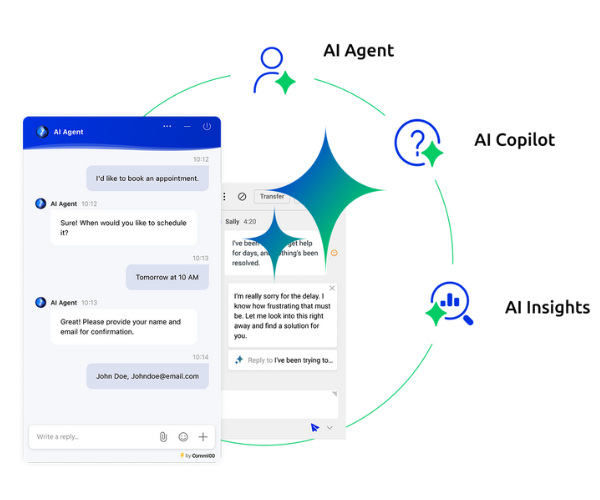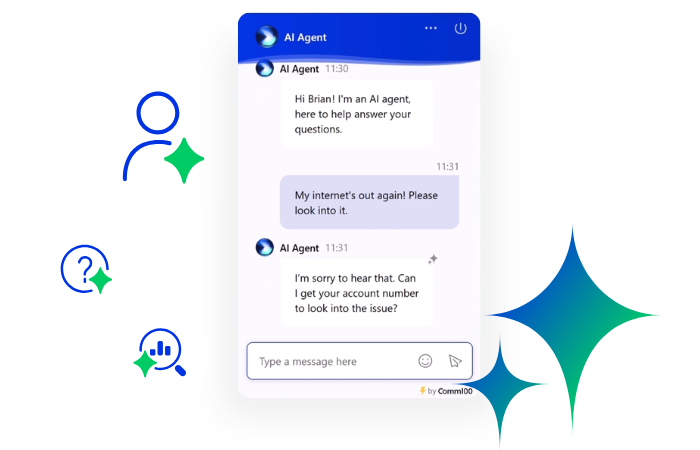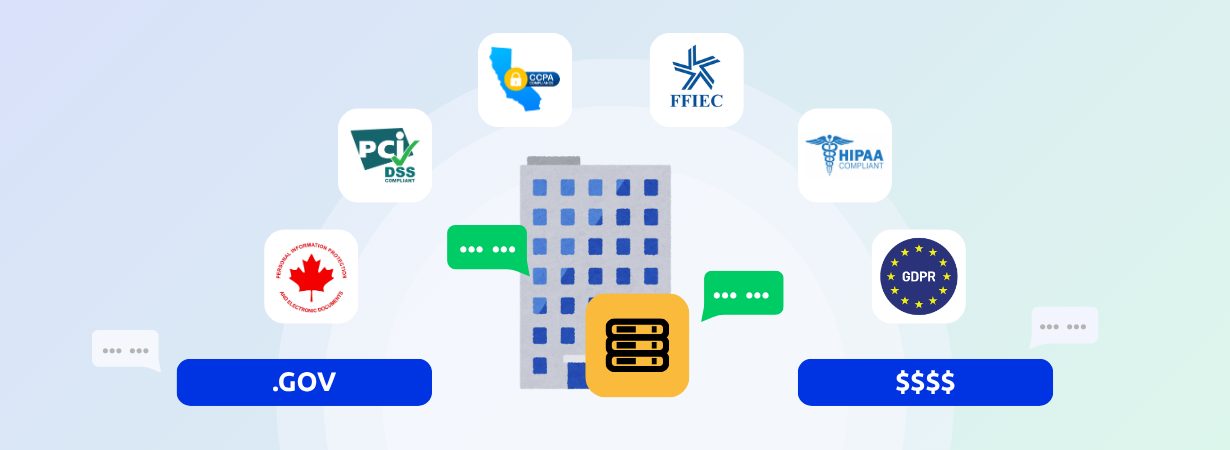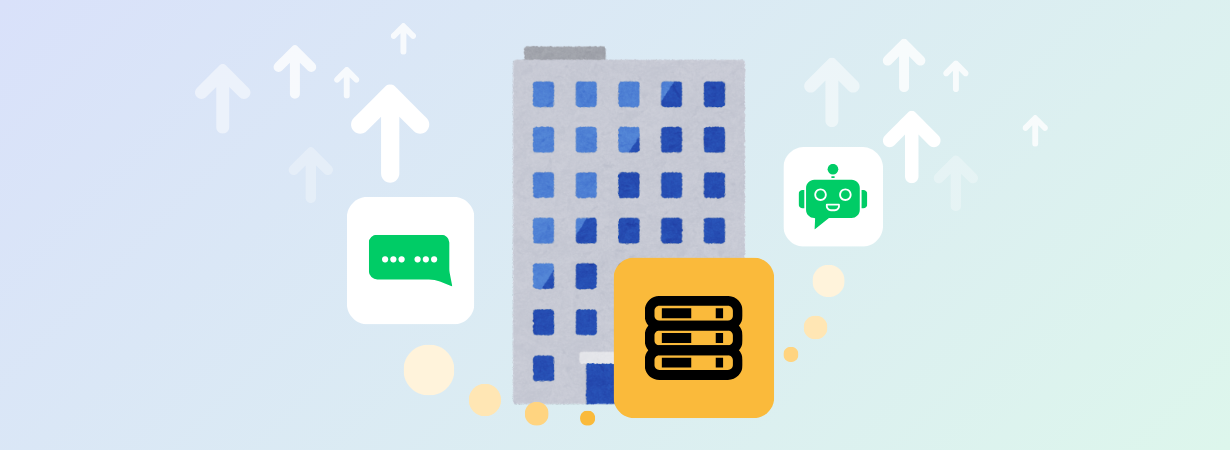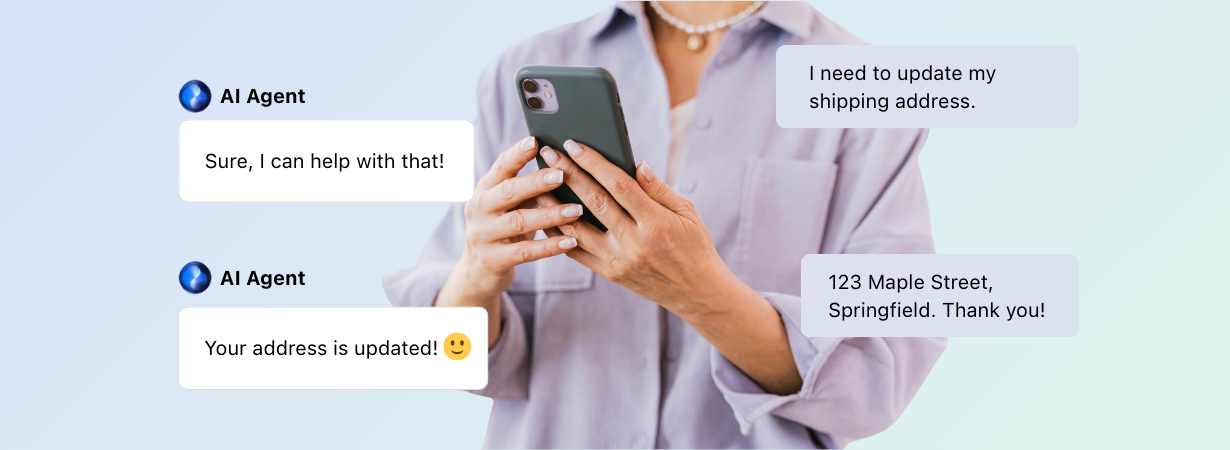As Gen Z enters higher education, support expectations are rising. Today’s students have grown up accustomed to the speed and convenience that technology brings, and they now expect their university to provide this too.
To meet these lofty expectations, many institutions are introducing university chatbots. With cost-effective automation from chatbots, universities are improving access to services and providing students with faster and more satisfactory support.
In this blog, we’ve taken 5 university chatbot examples from our SlideShare, Top 10 Use Cases for Chatbots in Higher Education. Read below for 5 university chatbot examples in higher education, and then download the SlideShare for even more ways that your school could benefit from a university chatbot.
The New Comm100 AI Trifecta – Driving Smarter, Deeper Customer Relationships
Learn how AI Agent, AI Copilot, and AI Insights work together to transform CX.
Watch the webinar
Webinar
1. Automate student self-serve
For universities supporting Gen Z students, self-serve support should be at the forefront of their strategy. A survey found that 75% of Gen Z look to noncompany resources like Reddit or YouTube to solve their issues either all or most of the time, rather than contacting customer support. Introducing a university chatbot is an ideal way to provide self-service to students in a way they’re comfortable accessing it – using a familiar chat interface.
A university chatbot can be integrated with existing resources to guide students towards the information they need. This information can be provided to students as text, images, video, or links within the chat window. With students helping themselves, your agents will also be more available to tackle complex issues and provide the personalized support that today’s students expect.
2. Route students to the best agent for the job
Students hate being transferred between agents when they seek support. For universities using chatbots, this problem can thankfully be eliminated when a bot is used to ask students a few questions at the beginning of a chat. By collecting some information upfront, students can be routed to the best agent for the job, ensuring a streamlined resolution to the query. With 75% of Gen Z expecting to solve complex problems by speaking to one person, university chatbots can significantly improve the student experience.
Routing rules can be used to direct student chats based on factors such as agent skill level, geographic region, or chat topic. In practice, this might include directing stressed students to their assigned counselor or routing potential students with questions about scholarships to the Financial Aid department. Research shows that schools must work hard to earn the trust of Gen Z students, as only about 41% say they trust colleges and universities. Getting students to the resources that they need can be an important step in developing a trusting relationship between school and student.
3. Provide 24/7 support availability
Today’s students have a range of high support expectations, from how they receive help to when. 72% of Gen Z say that they expect to interact with someone immediately when they contact a company. A well-trained university chatbot can respond to most incoming chats without agent intervention, and this creates an opportunity for schools to offer cost-effective 24/7 support.
For an example of this 24/7 support in higher education, we can look to Thompson Rivers University (TRU). After initial success with Comm100 Live Chat, TRU introduced Comm100 Chatbot to provide support outside of their regular business hours. With a chatbot in place, TRU has automated 83% of all incoming chats to their Future Student department. Thankfully for universities using chatbots, building and programming a chatbot is made easy with the right tools and doesn’t require a technical background. As Lachlan Todd, Communications & Systems Coordinator at TRU explains:
“I don’t have a computer science or programming background so finding a chatbot that was simple to build and code-free was crucial – and Comm100 Chatbot delivered on this. With a little learning and guidance from Comm100’s bot architect team, I built our bot from scratch with no technical knowledge. I think anyone who has a social media account can build a Comm100 Chatbot.”
Keep reading: Thompson Rivers University adopts Comm100 Live Chat & Chatbot across 5 departments
4. Spend more time on complex and sensitive queries
Experts have noted that Gen Z highly values personalization. In the classroom, this extends to student engagement that can help to boost enrollment and curb dropout. Although it may seem counterintuitive, universities using chatbots are an effective tool at providing the most personalized support available. This is because, with a bot handling the most straightforward requests, agents can spend more time on complex and sensitive issues that require more attention.
As schools focus more on the mental well-being of students in higher education, a university chatbot can make agents and student counselors more available. With around-the-clock resources available via chatbot and improved access to services during standard hours, chatbots help schools show students that they’re well supported in all aspects of their education.
5. Handle appointments and bookings
One of the top use cases for universities using chatbots is in automating the booking of appointments and resources. 60% of Gen Z say that they find chatting with customer service stressful. With this tendency toward introversion, where it’s possible to do so, schools should look for ways that students can get access to tools and services without going through an agent.
Task bots can easily be integrated with existing scheduling tools to handle bookings and appointments in higher education. Examples of where a university chatbot can be used to automate manual processes include:
- Booking study rooms in a library.
- Setting confidential appointments with a student counselor.
- Scheduling admissions appointments outside of standard hours.
With a chatbot handling these tasks inside a standard chat window, the process is easier and more natural for students than completing forms. As with other chatbot capabilities, a task bot can handle bookings and appointments 24/7, helping to decrease anxiety and letting students make plans on their own time.
Wrap Up
These 5 university chatbot examples are just the beginning of what a chatbot can do for higher education. To learn about universities using chatbots to improve the student experience, download our full SlideShare, Top 10 Use Cases for Chatbots in Higher Education.
The New Comm100 AI Trifecta – Driving Smarter, Deeper Customer Relationships
Learn how AI Agent, AI Copilot, and AI Insights work together to transform CX.
Watch the webinar
Webinar


